18+ SAMPLE Client Strategic Plan
-
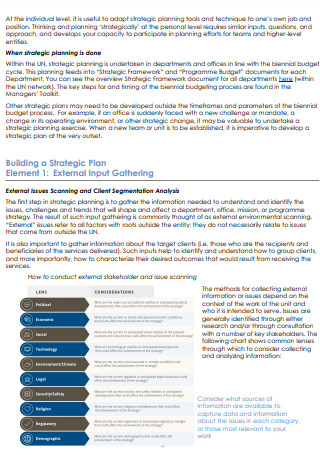
Client Segmentation Strategic Plan
download now -
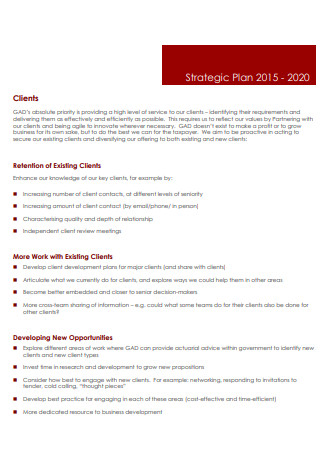
Client Strategic Plan
download now -

Client Quality And Strategic Plan
download now -
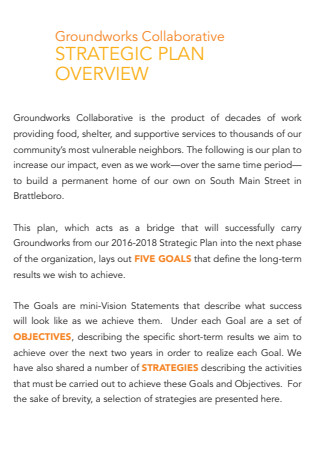
Client Strategic Plan Overview
download now -
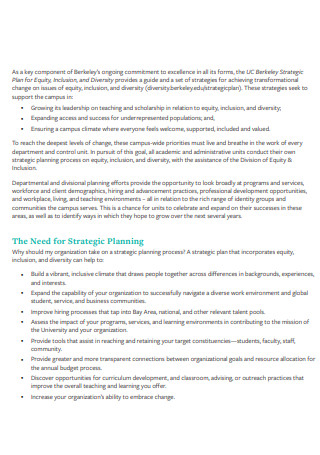
Client Equity Strategic Plan
download now -
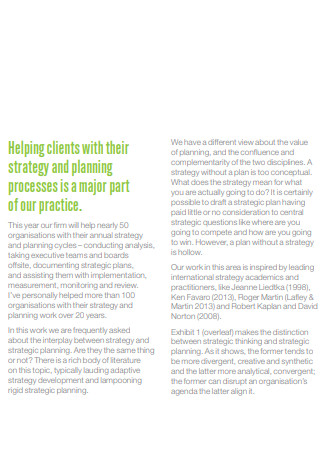
Sample Client Strategic Plan
download now -
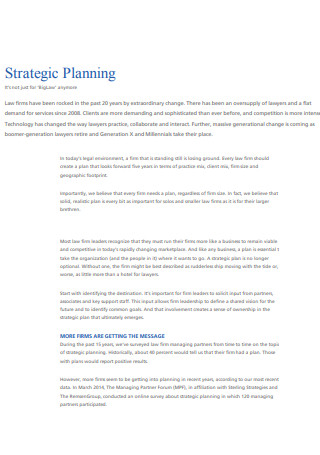
Client Legal Management Strategic Plan
download now -
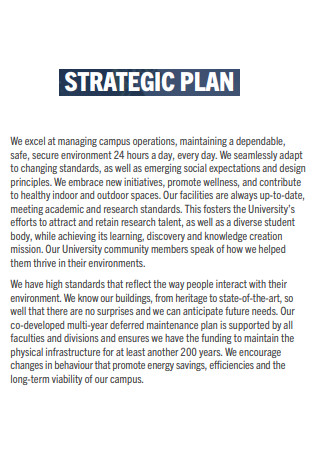
Client Facilities Strategic Plan
download now -
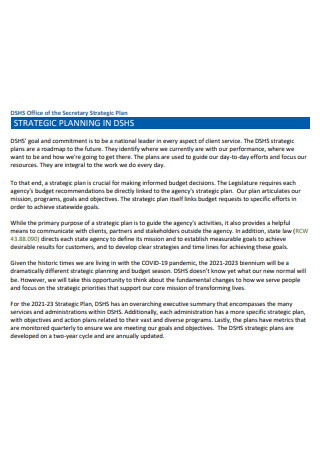
Client Service Strategic Plan
download now -
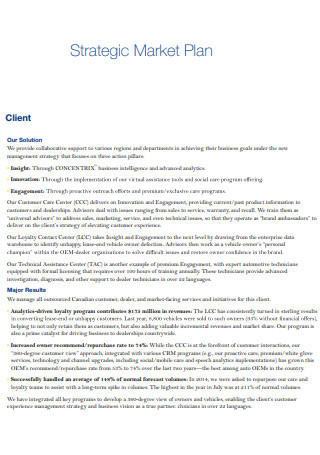
Client Strategic Market Plan
download now -
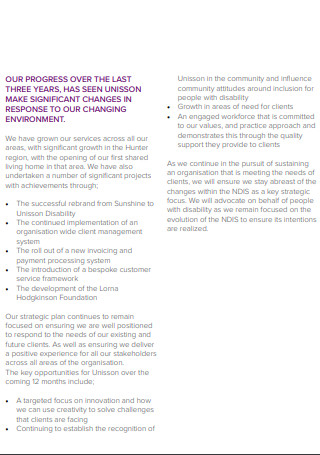
Client Goals Strategic Plan
download now -

Client Strategic Plan Toolkit
download now -
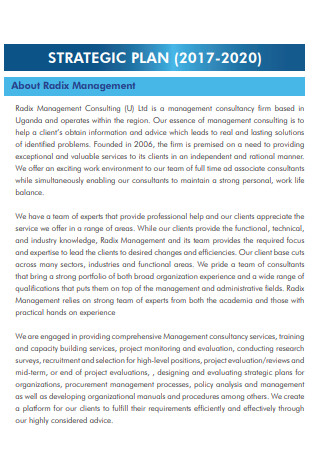
Simple Client Strategic Plan
download now -
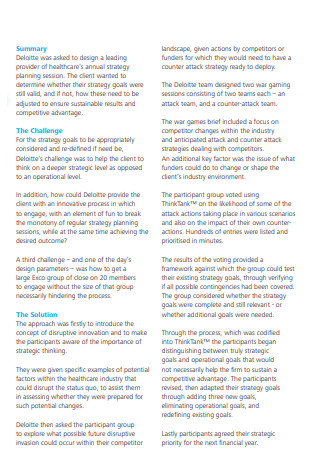
Client Annual Strategic Plan
download now -
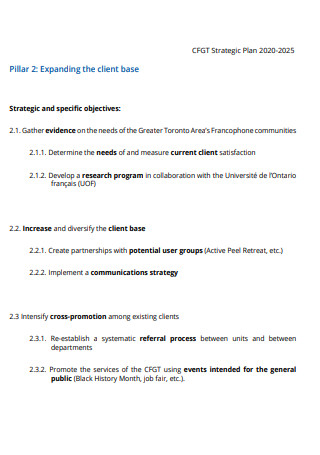
Client Base Strategic Plan
download now -
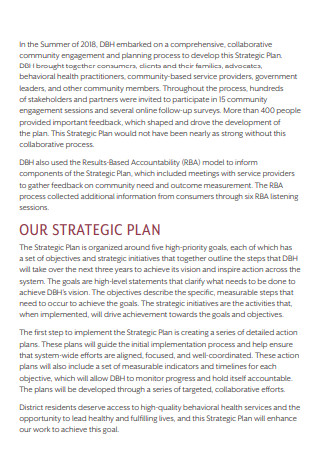
Client Behavioral Health Strategic Plan
download now -
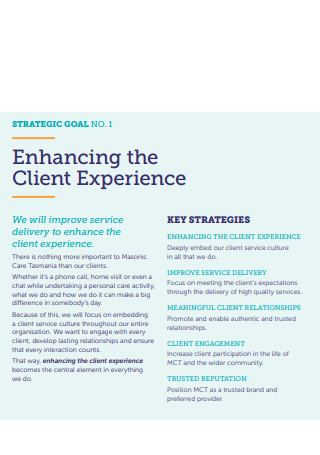
Client Strategic Plan Example
download now -
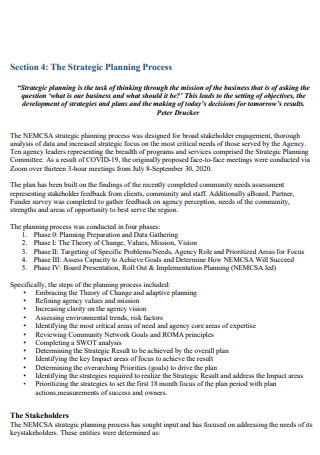
Client Strategic Plan Template
download now -
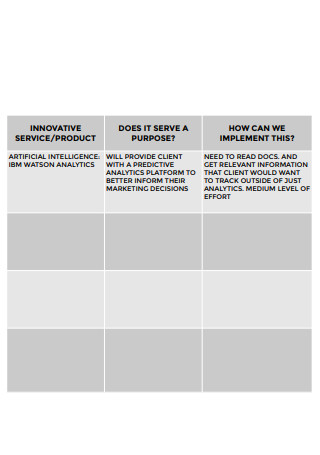
Client Strategic Account Plan
download now
FREE Client Strategic Plan s to Download
18+ SAMPLE Client Strategic Plan
What Is Client Strategic Plan?
What Is the Importance of Client Strategic Plan?
What Are the Core Components of Client Strategic Plan?
What Is Strategic Implementation?
Ways to Improve Customer Experience:
FAQs
Why Is Client Relationship Important?
What Does a Good Client Strategy Look Like?
Why Are Strategies Needed?
What Is Client Strategic Plan?
A client strategic plan is essential for every business. It tells you and your team where you are going as a company and how to get there. However, many businesses go through a time-consuming and costly strategic planning exercise, only to find themselves with a plan that is ignored or just glanced at once a year. A common reason is that the plan itself is not written properly. Moreover, a client strategic plan must give you and your team a simple, clear roadmap of what to do next. At its heart should be a prioritized list of your best ideas and specific steps to achieve your company’s goals.
Strategic planning is important to an organization because it provides a sense of direction and outlines measurable goals. Strategic planning is a tool that is useful for guiding day-to-day decisions and also for evaluating progress and changing approaches when moving forward. In order to make the most of strategic planning, your company should give careful thought to the strategic objectives it outlines, and then back up these goals with realistic, thoroughly researched, quantifiable benchmarks for evaluating results.
In addition, strategic planning starts with defining a company mission. A mission is important to an organization because it synthesizes and distills the overarching idea linking its practical strategies, enabling management and employees to align the specifics of their actions and decisions with a clearly defined vision and direction. Define your strategic mission in a way that is broad enough to guide both management and employees, and narrow enough to focus their efforts.
What Is the Importance of Client Strategic Plan?
Each successful business has a plan and knows where it is heading in the future. Setting a plan with goals, target dates, and a purpose should be finalized before embarking on a business. Taking the time on an ongoing basis to review the company’s past performance, and predict its future performance, gives it a road map to follow.
Without client strategic planning, which is knowing the current state of your business and where you want it to go, most businesses will fail. Below are some of the reasons why strategic planning is important and how to implement it:
Create a Business Plan
The very first strategic planning most businesses do is a business plan. When you first start your business, you will likely have prepared a mission statement, a budget, and a marketing and promotion plan. The business plan is a good first step, but it needs to be reviewed and updated as the business continues and grows. If you shove it in a drawer and let dust gather on it, it won’t serve as the foundation of your business, as it was meant to.
Use a Goal-Based Planning
How you go about conducting strategic planning will depend on many variables, including the size of your business, the time frame included, and your personal preferences. The most common style of plan is goals-based. In this type of plan, you set goals for the business (financial and non-financial) and map out the steps needed to meet those goals. When you first started your business, you likely developed a mission or values statement, outlining the purpose of your company and its overall reason for being. A mission-based strategic plan ties each part of the plan into the mission, to ensure that the company is always operating in the service of that mission.
Allot Time
It can be difficult to find the time to plan your business. Other, more pressing priorities, like trying to bring in revenue, may grab your attention; however, carving out time regularly will help you keep on top of your business. Regardless of how often you plan, make sure that you set it in stone in your day planner. Block off the time and don’t let anything else get in the way. Turn off your cell phone and, if at all possible, go somewhere away from your office to plan in order to minimize distractions.
Promoting Communication
As a business owner, you will most likely have employees. It is critical to inform them of your strategic plan so that they are on the same page and working towards the same goal as you.
Following Up
A critical part of the planning process is reviewing your previous plan and comparing it to your actual results. Were you able to bring in five new clients last month? If not, why not? Tweak the plan going forward to account for changes in your business or the general economic climate. The more experience you get with the planning process and with the operational side of your business, the more accurately you will be able to plan.
What Are the Core Components of Client Strategic Plan?
While it is clear that most companies see the value of customer centricity, most are struggling to deploy an actual strategy to get there. Here are the three core components of a customer strategy: insight, platform, and programs.
What Is Strategic Implementation?
Implementation is the process that turns strategies and plans into actions in order to accomplish strategic objectives and goals. Implementing your strategic plan is as important, or even more important, than your strategy.
A strategic plan provides a business with the roadmap it needs to pursue a specific strategic direction and set of performance goals, deliver customer value, and be successful. However, this is just a plan; it does not guarantee that the desired performance is reached any more than having a roadmap guarantees the traveler arrives at the desired destination.
Getting Your Strategy Ready for Implementation
For those businesses that have a plan in place, wasting time and energy on the planning process and then not implementing the plan is very discouraging. Although the topic of implementation may not be the most exciting thing to talk about, it is a fundamental business practice that’s critical for any strategy to take hold. In the following sections, you will discover how to get support for your client strategic plan and how to avoid some common mistakes:
Avoiding the Implementation Pitfalls
Because you want your plan to succeed, heed the advice here and stay away from the pitfalls of implementing your strategic plan. Here are the most common reasons strategic plans fail:
Lack of Ownership. The most common reason a plan fails is lack of ownership. If people don’t have a stake and responsibility in the plan, it will be business as usual for all but a frustrated few.
Lack of Communication. The plan does not get communicated to employees, and they don’t understand how they contribute.
Getting Mired in the Day-To-Day. Owners and managers, consumed by daily operating problems, lose sight of long-term goals.
Out of the Ordinary. The plan is treated as something separate and removed from the management process.
An Overwhelming Plan. The goals and actions generated in the strategic planning session are too numerous because the team failed to make tough choices to eliminate non-critical actions. Employees don’t know where to begin.
A Meaningless Plan. The vision, mission, and value statements are viewed as fluff and not supported by actions or don’t have employee buy-in.
Annual Strategy. Strategy is only discussed at yearly weekend retreats.
Not Considering Implementation. Implementation is not discussed in the strategic planning process. The planning document is seen as an end in itself.
No Progress Report. There is no method to track progress, and the plan only measures what’s easy, not what’s important. No one feels any forward momentum.
No Accountability. Accountability and high visibility help drive change. This means that each measure, objective, data source, and initiative must have an owner.
Lack of Empowerment. Although accountability may provide strong motivation for improving performance, employees must also have the authority, responsibility, and tools necessary to impact relevant measures. Otherwise, they may resist involvement and ownership.
Covering All Your Bases
As a business owner, executive, or department manager, your job entails ensuring you are set up for a successful implementation. Before you start this process, evaluate your strategic plan and how you may implement it by answering a few questions to keep yourself in check:
- How committed are you to implementing the plan to move your company forward?
- How do you plan to communicate the plan throughout the company?
- Are there sufficient people who have a buy-in to drive the plan forward?
- How are you going to motivate your people?
Making Sure To Have the Support
Often overlooked are the five key components necessary to support implementation: people, resources, structure, systems, and culture. All components must be in place in order to move from creating the plan to activating the plan.
People. The first stage of implementing your plan is to make sure to have the right people on board. The right people include those folks with required competencies and skills that are needed to support the plan. In the months following the planning process, expand employee skills through training, recruitment, or new hires to include new competencies required by the strategic plan.
Resources. You need to have sufficient funds and enough time to support implementation. Often, true costs are underestimated or not identified. True costs can include a realistic time commitment from staff to achieve a goal, a clear identification of expenses associated with a tactic, or unexpected cost overruns by a vendor. Additionally, employees must have enough time to implement what may be additional activities that they are not currently performing.
Structure. Set your structure of management and appropriate lines of authority, and have clear, open lines of communication with your employees. A plan owner and regular strategy meetings are the two easiest ways to put a structure in place. Meetings to review the progress should be scheduled monthly or quarterly, depending on the level of activity and time frame of the plan.
Systems. Both management and technology systems help track the progress of the plan and make it faster to adapt to changes. As part of the system, build milestones into the plan that must be achieved within a specific time frame. A scorecard is one tool used by many organizations that incorporates progress tracking and milestones.
Culture. Create an environment that connects employees to the organization’s mission and that makes them feel comfortable. To reinforce the importance of focusing on strategy and vision, reward success. Develop some creative positive and negative consequences for achieving or not achieving the strategy. The rewards may be big or small, as long as they lift the strategy above the day-to-day so people make it a priority.
Determine Your Plan
Implementing your plan includes several different pieces and can sometimes feel like it needs another plan of its own. However, you do not need to go to that extent. Use the steps below as your base implementation plan:
- Finalize your strategic plan after obtaining input from all invested parties.
- Align your budget to annual goals based on your financial assessment.
- Produce the various versions of your plan for each group.
- Establish your scorecard system for tracking and monitoring your plan.
- Establish your performance management and reward system.
- Roll out your plan to the whole organization.
- Build all department annual plans around the corporate plan.
- Set up monthly strategy meetings with established reporting to monitor your progress.
- Set up annual strategic review dates, including new assessments and a large group meeting for an annual plan review.
Ways to Improve Customer Experience:
Take a look at seven ways to create a great customer experience strategy to help you improve customer satisfaction, reduce churn and increase revenues:
Step 1: Create a Clear Customer Experience Vision
The first step in your customer experience strategy is to have a clear customer-focused vision that you can communicate with your organization. The easiest way to define this vision is to create a set of statements that act as guiding principles. Once these principles are in place, they will drive the behavior of your organization. Every member of your team should know these principles by heart and they should be embedded into all areas of training and development.
Step 2: Understand Your Customers
The next step, bring to life the different types of customers who deal with your customer support teams. If your organization is going to really understand customer needs and wants, then they need to be able to connect and empathize with the situations that your customers face.
Step 3: Create an Emotional Connection with Your Customers
Ever heard of the phrase, “it’s not what you say; it’s how you say it”? The best customer experiences are achieved when a member of your team creates an emotional connection with a customer. Customers become loyal because they are emotionally attached and they remember how they feel when they use a product or service. A business that optimizes for an emotional connection outperforms competitors by 85% in sales growth. A positive experience for customers means a lot.
Step 4: Capture Customer Feedback in Real Time
You need to ask and ideally you do this by capturing feedback in real time. Use live chat tools to have real time conversations, send a follow up email to every customer using post-interaction surveys and similar customer experience tools. It is also important to tie customer feedback to a specific customer support agent, which shows every team member the difference they are making to the business.
Step 5: Use a Quality Framework for Development of Your Team
Identify the training needs for each individual member of your customer support team. Many organizations assess the quality of phone and email communication; however, a quality framework takes this assessment one step further by scheduling and tracking your team’s development through coaching, eLearning and group training.
Step 6: Act Upon Regular Employee Feedback
Most organizations have an annual survey process where they capture the overall feedback of your team, how engaged they are, and the business’ ability to deliver an exceptional service.
FAQs
Why Is Client Relationship Important?
When you connect with the target audience deeply, you are much more likely to understand their requirements, resolve their problems, and create a sense of mutual understanding with them. Positive customer relations help you connect with your customers on a much more personal level.
What Does a Good Client Strategy Look Like?
Having the ability to predict a future need will let you be proactive and attentive and, it means you can do things like: provide related products based on purchase history, create and deliver targeted email marketing campaigns, and understand the view of the customer.
Why Are Strategies Needed?
A strategic plan establishes a direction for your business to take, it will help it sharpen its focus in order to get there. Strategic planning can help your organization improve the right goals and targets and help everyone focus their efforts into meeting them.
Creating an initial plan and communicating that plan to your employees will ensure that everyone is working towards the same goal as planning out the future of your business is the best way to ensure success. Taking out time to review your business’ results and comparing them to your plan will ensure that the right policies and procedures continue whereas those that are not benefiting the company will be removed.
Customer expectations are higher than ever and word of mouth travels fast. As the customer becomes even more empowered, it increases the importance of the customer experience, which is an area that needs constant nurturing and care and, with a greater focus on customer experience strategy, companies will realize a positive impact on customer loyalty, higher retention, and increased revenue growth.
